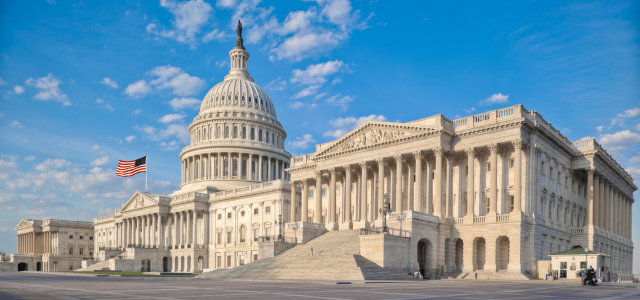If you are a Web publisher earning less than $1 million annually in advertising revenue and with five or fewer employees, you can help save the ad-supported Internet. I urge you to join the Interactive Advertising Bureau and become part of the small business army we are mobilizing to stop politicians from unfairly and inappropriately regulating digital advertising. The threat is very real. As I have outlined in previous postings, forces arrayed in Washington and multiple state capitals are specifically targeting the business infrastructure that enables small Web sites to support themselves through advertising sales. Although these advocacy groups have provided no evidence of public harm, their efforts have resulted in a flurry of regulatory proposals which, if enacted, would severely hinder the ability of small publishers to support themselves with advertising sales, and impair the ability of small businesses to use interactive advertising to market themselves.
 I believe these proposals have received little attention from marketers, media and publishers because they have been hidden on legislative calendars in Albany, Hartford, and Springfield, or been negotiated behind closed doors in Washington, away from our ecosystem’s business leaders. Moreover, because the proposals state that they seek to control “behavioral marketing” or “third party networks” or “online preference marketing,” publishers that do not engage in such practices or with such practitioners believe they are safe.
I believe these proposals have received little attention from marketers, media and publishers because they have been hidden on legislative calendars in Albany, Hartford, and Springfield, or been negotiated behind closed doors in Washington, away from our ecosystem’s business leaders. Moreover, because the proposals state that they seek to control “behavioral marketing” or “third party networks” or “online preference marketing,” publishers that do not engage in such practices or with such practitioners believe they are safe.
But in fact, these proposals are so broad, they will put virtually all interactive advertising practices — and even many mainstream marketing practices — under a strict regulatory regime. Business leaders need to start paying attention now, or the underpinnings of the “free” — which is to say ad-supported — Internet will come undone.
Undermining Advertising Research
Consider a bill that has been before the New York State Assembly, which aims to curtail “online preference marketing.” It defines “online preference marketing” as “a process used by entities whereby data is typically collected over time and across web pages to determine or predict consumer characteristics or preference for use in ad delivery, including the use of non-personally identifiable information.” But employing non-identifiable data to predict consumer preferences for use in ad delivery is, in fact, the very definition of advertising research. Were the New York bill to pass, a mainstay of business development for 120 years would, for the first time, fall under a strict regulatory regime – forcing small Web publishers and their advertisers to incur legal and lobbying expenses they cannot afford, and just for New York State. Or look carefully at Connecticut General Assembly Bill 5765. It offers the same, sweeping definition of “online preference marketing,” and goes on to say that any publisher offering it through a “third-party advertising network” must additionally give consumers the opportunity to “opt out” from receiving it. This means consumers, for the first time, would be able to force advertisers to stop providing them ads – but only if those ads are relevant to their interests! Presumably, mass-distributed “spam” advertising would still be protected.
 The Connecticut bill also would allow consumers to pull non-identifying data they generate out of the aggregated databases that are commonly used in market research to improve products, services, and marketing. To put this in perspective, this is the equivalent of allowing you, me, or anyone to demand that a grocer not use our anonymous checkout-counter scanner data to determine when to restock a product.
The Connecticut bill also would allow consumers to pull non-identifying data they generate out of the aggregated databases that are commonly used in market research to improve products, services, and marketing. To put this in perspective, this is the equivalent of allowing you, me, or anyone to demand that a grocer not use our anonymous checkout-counter scanner data to determine when to restock a product.
These state bills have been tabled — for now. But consider the Federal Trade Commission’s recommendations for self-regulatory principles for “online behavioral advertising.” The FTC has been a good partner with the interactive media and marketing industries, and has encouraged us, for the most part beneficially, to develop an effective self-regulatory mechanism to guard consumers’ legitimate interests in identity protection and data security. Yet even the FTC has succumbed to the fear-mongering of anti-business advocacy groups, and HAS offered breathtakingly broad definitions that could severely hamper the activities of small publishers and marketers.
The FTC defines “behavioral advertising” as “the tracking of a consumer’s activities online,” and would give consumers the right “to choose whether or not to have their information collected for such a purpose,” apparently even if it is anonymous and non-identifying. Yet one such “tracking activity” is the measurement of Web site audience traffic – the central measure by which advertising prices are established. Another such “tracking activity” is the measurement of advertising delivery – the core determinant of whether the publisher gets paid by the marketer for running its ads! Thus, in its recommendations for the self-regulation of what it calls “behavioral advertising,” the commission has made suggestions that would break longstanding processes essential for the management of media companies in the U.S. The most unfortunate aspect of these proposals is that they are utterly unnecessary. The IAB and its members vigorously support the principle of consumer control over their media consumption. Indeed, consumer control is one of the fundamental reasons interactive media have grown so quickly in popularity. And consumers have all the tools they need to control all forms of data collection in online media and advertising, built into their browsers and into security packages, many of them available free online. Small Business Boon
As I told the House of Representatives Small Business Committee in Washington earlier today, such regulations would have a disproportionately negative effect on the small publishers and small marketers that are the backbone of the interactive media and marketing ecosystem.
Because so much attention in our industry recently has focused on multi-billion-dollar consolidation battles, it’s easy to assume that we lives in a land of giants. But nothing could be further from the truth. Interactive media is a dynamic field suffused with small entrepreneurs with big dreams. When you think of IAB’s 375+ members, you may conjure up the great names of the online and offline media world – Google, Yahoo, AOL, MSN, The New York Times, Time Inc., CBS, and Walt Disney among them. But the majority of our members – 61 percent – are small businesses, earning from $0 to $8 million annually in advertising revenue.
Evidence that the Internet is a small-business engine abounds. For example, research done by the consulting firm Booz & Co. for the IAB, the Association of National Advertisers, and the American Association of Advertising Agencies shows that 40 percent of IAB members’ revenues comes from local businesses.
Interactive advertising revenues totaled more than $21 billion in 2007 and were estimated at nearly $5.8 billion in the first quarter of 2008, up 18 percent over the first three months of 2007. Of that total, search is about 40 percent. And small companies’ share of online ad spending in search engines is more than double the share of medium or large companies, according to the research firm Outsell, Inc.
According to the Pew Internet & American Life Project, more than 32 million American adults have used online classified ads for selling or buying. eBay — which is both an advertising vehicle and a retail mechanism for its sellers — says 768,000 small businesses across the U.S. use this online marketplace as their primary or secondary marketing channel. Blog networks, supported by advertising, helped would-be media moguls generate 112 million blogs worldwide; in the U.S., as of July 2006, some 12 million American adults, about 8 percent of the American population, were publishing their own blogs, which were being read by 57 million others, according to Pew.
Publishing’s Long Tail Those blogs are part of the most remarkable communications phenomenon since the invention of the printing press: the explosion of small interactive publishing businesses, untold thousands of which support themselves through advertising sales.
 While many of these businesses employ direct sales forces, I pointed out at Congress yesterday that an essential aid to them has been online advertising networks consisting of hundreds, thousands, even tens of thousands of sites. These online networks are the moral equivalent of the broadcast radio and television networks with which we grew up; they have technological infrastructures that can get contextual or behavioral advertising and ad revenue to these small sites, wherever they are located.
While many of these businesses employ direct sales forces, I pointed out at Congress yesterday that an essential aid to them has been online advertising networks consisting of hundreds, thousands, even tens of thousands of sites. These online networks are the moral equivalent of the broadcast radio and television networks with which we grew up; they have technological infrastructures that can get contextual or behavioral advertising and ad revenue to these small sites, wherever they are located.
But there’s one crucial difference: Instead of delivering the same programming – and for the most part the same ads from the same giant marketers — at the same time across groups of local affiliates, online networks allow myriad voices to flourish, serving myriad interests and needs, in the tiniest nooks and crannies of our culture. No one knows how many of these “long tail” publishers are in the U.S., but here’s a sample gathered by the ThinkPanmure equity research firm. The 24/7 Real Media network sells and places ads for 1,000 Web sites. The Blue Lithium Network, owned by Yahoo, reaches 119 million unique U.S. users through 1,000 publisher sites. Burst Media has 4,200 ad-supported sites in its network. Tacoda, a network acquired last year by AOL, delivers behavioral ads to half the U.S. population, across 4,500 sites. The Adbrite auction-based ad marketplace represents 19,000 Web publishers.
How diverse are these publishers? We don’t have a census of the whole, so to prepare my Congressional testimony, I asked my IAB team and some of the networks among our membership for examples of their favorite small, ad-supported publishers. Interestingly, many of them are mothers who are using interactive tools and services to develop home-based businesses around their passions. Here are a few examples:
- Baristanet.com is a community site started by three local women for the area of northern New Jersey where I grew up. Its advertisers include a local hospital, Montclair Family Dentistry, and Dial Pest Control of Roseland.
- Dooce.com is a blog started by a stay-at-home mother in Salt Lake City, who was the valedictorian of the Class of 1993 at Bartlett High School in Memphis, Tennessee. She carries ads from the Disney Vacation Club and Verizon.
- Bakeorbreak.com is run by a woman in northeast Mississippi, who subtitles her Web publication “Adventures of an Amateur Baker.” It’s filled with recipes, sells cookbooks, and carries ads for M&M’s, Perdue chicken, and Bertolli olive oil. Some of those ads are sold by Martha Stewart Living Omnimedia, an example of the growing symbiosis between small and large publishers on the Web.
- Here are three political sites that cover the spectrum of opinion. Many of you know Dailykos.com, the famous liberal political blog; look closely, and you’ll see that it’s supported by ads, many of them placed by the Google Adsense network, from PBS, the online t-shirt maker Café Press, and others. Latino Issues, by contrast, is a conservative Latino blog, with some ads also sold by Google. Its advertisers include the dating service LatinoAmericanCupid.com. And Confederate Yankee is an ad-supported site, via the Pajama Network, that’s a hybrid of conservative and liberal, Northeast and Southeast sentiments and values: Advertisers include Omaha Steaks and FTD, the floral company.
- Womenslacrosse.com is the central meeting place for women who participate in the oldest American sport. It’s a family business run by Founder and CEO Cathy Samaras of Annapolis, Maryland, and its advertisers include the Kaplan test preparation company, and the Bowie Baysox Class AA minor league baseball team.
- Scienceblogs.com is a collection of 90 ad-supported science sites covering fields from neurophilosophy to quantum mechanics to tetrapod zoology. Its offices are in LA, Washington, New York, London, Munich, and Shanghai, but its bloggers come from all over: Iowa, Colorado, Massachusetts, New Jersey, and Virginia, among other places. Its advertisers include PerkinElmer and Dow Chemical.
- AfricanSisters.com was formed in 1999 in Garland, Texas by a group of black women to help women of color build businesses, increase employment and build revenue. Its advertisers include the iGourmet.com “tea-of-the-month club,” Crockpot cookery, and Kmart.
IAB Thinks Small
 As the IAB team surveyed the regulatory landscape this past year, it occurred to us that few regulators or legislators are aware of this small business landscape, and how interactive media and advertising have served, in essence, is its railroad: the network that enables these tiny markets to exchange value within and among themselves. So we asked our Board of Directors and then our entire membership to approve a change in our bylaws, and allow small publishers to join the IAB at an advantaged price — $500 in annual dues, or 1/20th the minimum dues tariff we charge General Members. I’m pleased to say our membership approved this Small Publisher Membership category by an overwhelming majority last week. So if you think small (or work with publishers who do) please let them know about our offer. (I’m equally pleased to note that when we canvassed about a dozen of our network-oriented members and asked if they would help us market this new membership to their publisher affiliates, each and every one enthusiastically answered in the affirmative.) IAB Small Publisher Members will have business insurance and services discounts; preferential pricing for IAB events; special webinars and seminars designed to teach small publishers the contours of the advertising and marketing industries; and membership in the IAB’s new Small Publishers Committee. And, of course, there is representation by the IAB in Washington and across the U.S. Like our Associate Memberships, these will not carry voting rights — but any Small Publisher Member that grows large enough (or otherwise wants advanced participation) is free to join IAB as a General Member at the normal dues rates. Our first signup was Tim Carter, the founder and proprietor of Askthebuilder.com in Cincinatti, Ohio. I wrote about Tim — and his remarkable development from a self-syndicated, hand-to-mouth newspaper columnist to an online media mogul earnings hundreds of thousands of dollars in ad income a year, thanks to network-based sales — in an earlier “clog” posting. When I asked Tim (who also testified at the House hearings yesterday) why he was joining the IAB, here’s what he said:
As the IAB team surveyed the regulatory landscape this past year, it occurred to us that few regulators or legislators are aware of this small business landscape, and how interactive media and advertising have served, in essence, is its railroad: the network that enables these tiny markets to exchange value within and among themselves. So we asked our Board of Directors and then our entire membership to approve a change in our bylaws, and allow small publishers to join the IAB at an advantaged price — $500 in annual dues, or 1/20th the minimum dues tariff we charge General Members. I’m pleased to say our membership approved this Small Publisher Membership category by an overwhelming majority last week. So if you think small (or work with publishers who do) please let them know about our offer. (I’m equally pleased to note that when we canvassed about a dozen of our network-oriented members and asked if they would help us market this new membership to their publisher affiliates, each and every one enthusiastically answered in the affirmative.) IAB Small Publisher Members will have business insurance and services discounts; preferential pricing for IAB events; special webinars and seminars designed to teach small publishers the contours of the advertising and marketing industries; and membership in the IAB’s new Small Publishers Committee. And, of course, there is representation by the IAB in Washington and across the U.S. Like our Associate Memberships, these will not carry voting rights — but any Small Publisher Member that grows large enough (or otherwise wants advanced participation) is free to join IAB as a General Member at the normal dues rates. Our first signup was Tim Carter, the founder and proprietor of Askthebuilder.com in Cincinatti, Ohio. I wrote about Tim — and his remarkable development from a self-syndicated, hand-to-mouth newspaper columnist to an online media mogul earnings hundreds of thousands of dollars in ad income a year, thanks to network-based sales — in an earlier “clog” posting. When I asked Tim (who also testified at the House hearings yesterday) why he was joining the IAB, here’s what he said:
“I decided to join the IAB for any number of reasons. Primarily, I want to be connected with an organization that’s ahead of the curve, and gives me an enormous competitive edge in the marketplace. I also enjoy being surrounded by other successful people who help me to achieve goals I set for myself. I also love the fact that the IAB represents small digital publishers like myself in Washington. I don’t have the time nor resources to be heard, but politicians need to know the facts about what is happening in the Internet world I work in. The IAB delivers a fair and balanced perspective to these lawmakers.”
I’m incredibly proud to have Tim Carter as a member of the Interactive Advertising Bureau. But we should aspire to make sure that hundreds of thousands, even millions, of Tim Carters can flourish in this country, building businesses through the communications, advertising, and services available online. We can do that by assembling together, to learn each others’ best audience-building and marketing practices, and to ward off the ugly and unnecessary hand of anti-Internet regulation. Put simply, IAB WANTS YOU!. Click here and join today.




